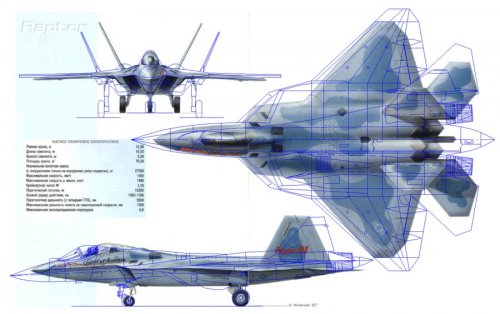Doubt or hope? The LERX slats are another moving object compared to the F-22 and F-35 that’s just basic mathematics 2+2= 4 and that is a bigger number than 2. If the T-50 is not going to use the LERX slats in LO mode and instead use the whopping big TVC nozzles then that is even worse. Its OK to have big reflectors at the rear of the aircraft and keep the frontal RCS down as long as the big things at the rear remain blocked from the front by the fuselage. If you start pointing them out, down and up then that’s a big thing.
Your “substantial” is just a make believe semantic. Also if you can visually identify wether an aircraft is fitted with RAM or not based on relatively low resolution images then there’s a job for you with the DIA getting paid $250,000 a year because you’re a national asset. As I pointed out above there is no evidence that the Russians have anything like the USA’s expertise in RAM. Even if they did the limitations of RAM in a fighter type design and weight margins are such that at best (USA levels of technology) it’s unlikely to provide more than an order of magnitude reduction in RCS. The aircraft’s shape needs to get you most of the way to the finish line.
Abraham Gubler said:
Most likely because the T-50 appears to reuse much of the Su-27 aerostructure.
Trident said:
I suppose it is reasonable to state that the F-22 appears to reuse much of the F-15 aerostructure then? Because we have about the same amount of evidence for both statements - a purely superficial resemblance.
The comparative similarities between the F-15 and F-22 and Su-27 and T-50 are not in the same ball park or even the same city. The T-50 has an extremely similar structure to the Su-27. The landing gear is in the same place, the engines are in the same place, the nose is in the same place, the wing roots are in the same place. While there have been some detail changes it would appear that both aircraft share a very similar or identical internal structure.
Of course you won’t see this evidence if you don’t want to. And since that’s your problem, not mine, I won’t pass any further comment or judgement.




